CHAPTER 3:Scrum Overview
The Competitive Edge for Modern Project Managers
3.1 What is Scrum Purpose and Philosophy
Introducing Scrum
Scrum is one of the most popular ways to apply Agile principles in real projects. At its core, Scrum is a lightweight framework designed to help teams tackle complex problems by delivering valuable results in small, manageable steps. Instead of trying to predict everything in advance, Scrum encourages teams to build, test, and adapt as they go. This focus on learning and improvement makes Scrum especially effective in fast-changing environments where certainty is rare.
Where Scrum Comes From
The origins of Scrum go back to 1986, when researchers Hirotaka Takeuchi and Ikujiro Nonaka published a Harvard Business Review article describing a new, flexible approach to product development. They used a rugby metaphor, explaining that successful teams advanced like a rugby scrum, working closely together and passing the ball back and forth. In the 1990s, Jeff Sutherland and Ken Schwaber formalized this approach into what we now know as Scrum. Today, Scrum is used far beyond software, from marketing to healthcare to education.
Why Scrum Exists
Scrum was created to solve a problem many organizations still face: traditional project management approaches often fail when requirements are unclear, customer needs shift, or innovation is required. Scrum flips the process. Instead of big, detailed upfront plans, Scrum delivers work in short cycles called Sprints. Each Sprint results in something usable and valuable, which can be inspected, tested, and refined with feedback. The purpose of Scrum is simple: deliver value quickly, reduce waste, and help teams learn faster than traditional methods allow.
The Five Scrum Values
Scrum is not just about process—it is built on five values that shape how teams work together. These are commitment, focus, openness, respect, and courage. Commitment means the team dedicates itself to the work and goals. Focus means concentrating on what is most important. Openness encourages sharing progress and challenges honestly. Respect ensures every member is valued and trusted. Courage empowers the team to make tough decisions and face change. These values create the environment where Scrum can thrive.
Scrum as a Philosophy
Beyond the events, roles, and artifacts, Scrum is a way of thinking about work. It embraces the reality that uncertainty is normal, and progress comes through learning. Scrum teams are cross-functional and self-organizing, meaning they decide how best to do their work. Managers no longer command and control; instead, leadership focuses on enabling teams and removing obstacles. This philosophy allows organizations to deliver results faster, adapt to change, and keep people motivated and engaged.
Closing Thoughts
Scrum is simple to describe, but powerful in practice. It blends the lessons of history, the discipline of teamwork, and the courage to embrace change. Remember this: Scrum is more than a process. It is a philosophy of delivering value, built on collaboration, transparency, and trust.
3.2 Scrum Framework Roles Events and Artifacts
Understanding the Scrum Framework
The Scrum framework is simple in structure but powerful in practice. It brings clarity to complex work by defining clear roles, events, and artifacts. These elements act like the rules of a game, giving teams boundaries while leaving them free to decide how to play. By combining structure with flexibility, Scrum provides enough guidance to stay organized while encouraging adaptation and creativity.
The Three Scrum Roles
Scrum defines only three roles, often called the Scrum Team. First, the Product Owner represents the customer and is responsible for maximizing value. They manage the product backlog and ensure priorities reflect business needs. Second, the Scrum Master is a servant-leader who coaches the team, removes obstacles, and ensures Scrum principles are followed. Third, the Development Team consists of professionals who design, build, test, and deliver the product. Together, these roles create a balanced structure that combines vision, facilitation, and delivery.
The Five Scrum Events
Scrum uses time-boxed events to bring rhythm and predictability. The Sprint is the heartbeat of Scrum, lasting one to four weeks and producing a usable increment. Sprint Planning happens at the start of each Sprint, where the team decides what to deliver and how to do it. The Daily Scrum is a short stand-up meeting for the team to align and adapt daily. At the end of the Sprint, a Sprint Review is held to inspect the product and gather feedback. Finally, the Sprint Retrospective focuses on improving the team’s process and collaboration. These events keep the team aligned, transparent, and constantly improving.
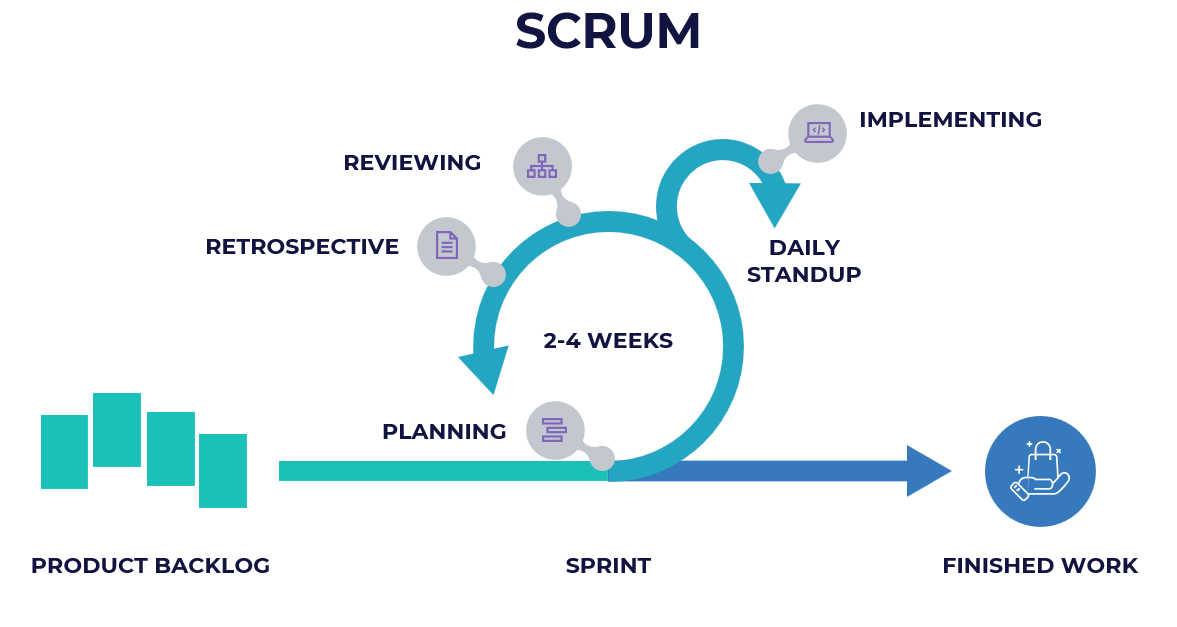
The Three Scrum Artifacts
Artifacts in Scrum capture essential information about the work. The Product Backlog is a prioritized list of everything that might be needed in the product, owned by the Product Owner. The Sprint Backlog is a subset of the Product Backlog, chosen by the Development Team for the current Sprint, along with a plan for delivery. The Increment is the result of the Sprint: a working, tested, and potentially shippable product. These artifacts provide clarity on what has been done, what is being worked on, and what remains.
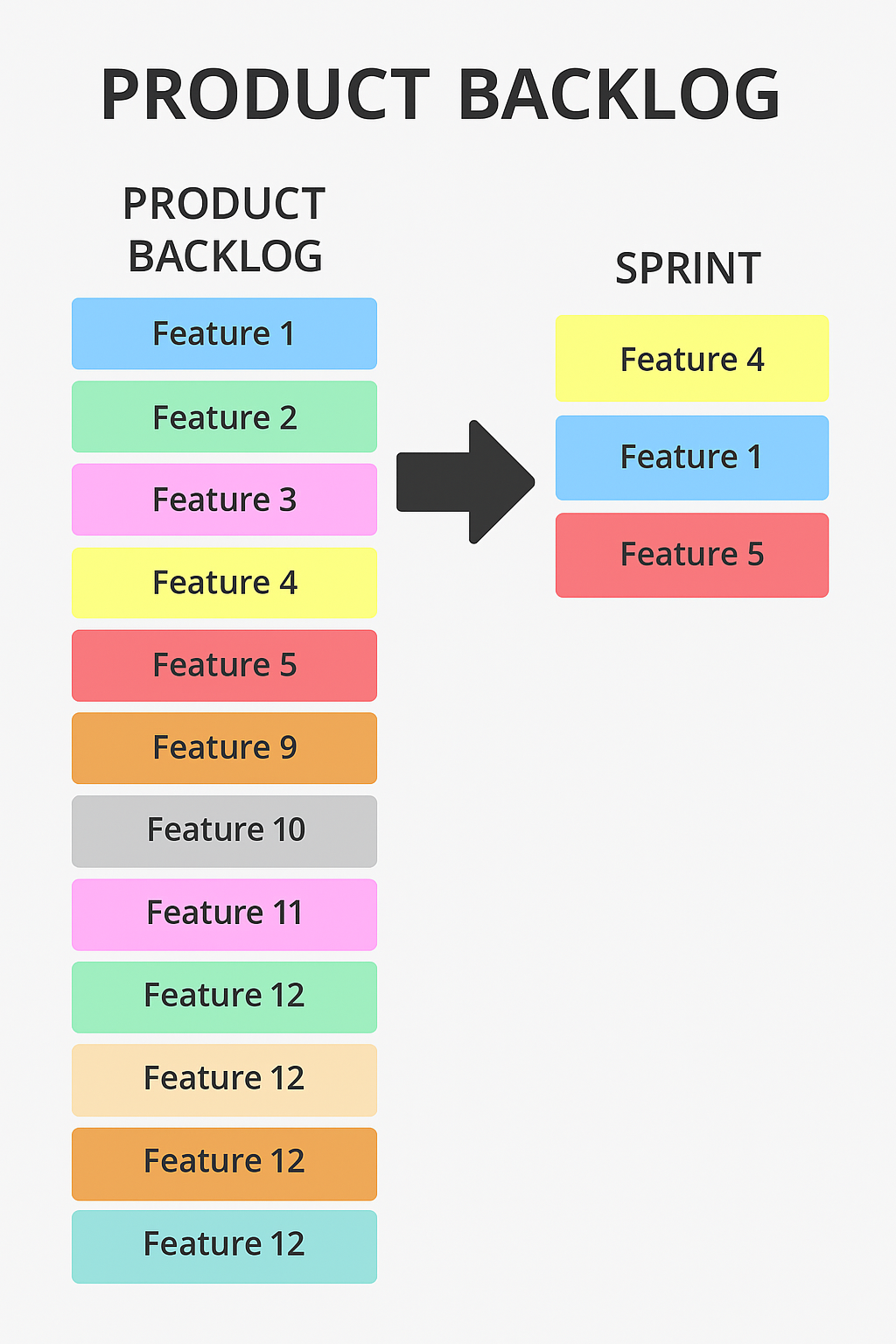
How It All Fits Together
The roles, events, and artifacts interact as a complete system. The Product Owner sets direction, the Development Team delivers, and the Scrum Master supports. The events provide cadence, helping the team plan, inspect, and adapt. The artifacts give visibility and transparency, ensuring everyone understands the current state of work. Together, they form a cycle that repeats every Sprint, enabling continuous delivery of value. This combination of structure and iteration is what makes Scrum both simple and effective.
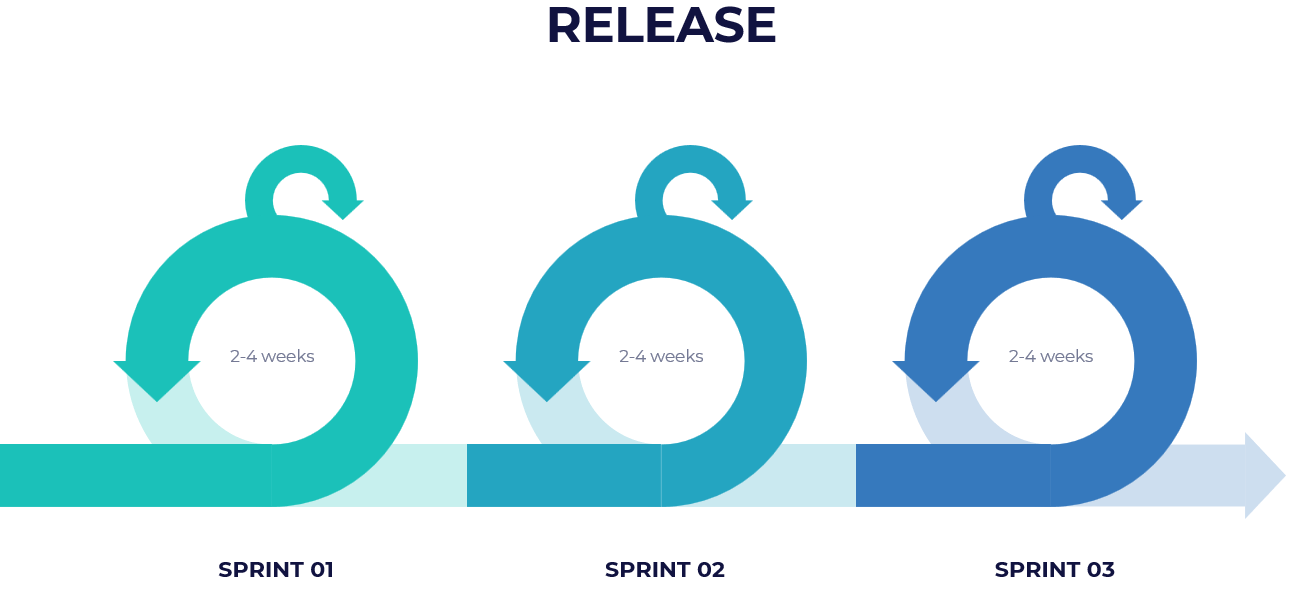
Closing Thoughts
The Scrum framework is intentionally lightweight. With only three roles, five events, and three artifacts, it avoids unnecessary complexity. Yet, within this simple framework lies the power to manage uncertainty, foster collaboration, and drive results.
3.3 Scrum Theory Transparency Inspection and Adaptation
The Foundation of Scrum
Scrum is based on a simple yet powerful idea called empirical process control. This means we make decisions from observation and evidence, not from long-term predictions. In complex projects where uncertainty is high, this approach provides more reliable results. Empirical process control relies on three pillars—transparency, inspection, and adaptation. Together, they make Scrum effective and resilient in changing environments.
Transparency in Scrum
Transparency means that everyone must see the same truth about the work. Information about progress, priorities, and challenges is visible to all team members and stakeholders. Scrum artifacts such as the Product Backlog, Sprint Backlog, and Increment are designed to provide this clarity. When transparency is strong, trust grows, and the team can make informed decisions. Without transparency, inspection and adaptation lose their value.
Inspection in Scrum
Inspection means checking the product and the process at regular points. Scrum builds inspection into its events. The Daily Scrum inspects progress toward the Sprint Goal. The Sprint Review inspects the product with stakeholders. The Sprint Retrospective inspects how the team works together. These regular checkpoints help identify problems early, when they are easier and cheaper to fix. Inspection is not about micromanagement—it is about learning and improvement.
Adaptation in Scrum
Adaptation is about making changes when inspection shows something is not working. If a plan is off track, the team adjusts. If customer feedback reveals a new need, the backlog changes. Adaptation is built into every event and every Sprint. This keeps Scrum dynamic and responsive, allowing the team to move closer to delivering the right product in the right way. Without adaptation, inspection is wasted effort.
Empirical Process Control in Action
The three pillars work together as a system. Transparency ensures that facts are visible. Inspection reveals the current state of work. Adaptation allows teams to respond to what they discover. For example, a Sprint Review may show that a feature is confusing for users. Because the backlog is transparent, the Product Owner can adjust priorities, and the team adapts in the next Sprint. This cycle repeats, helping the product evolve through evidence, not guesswork.
Closing Thoughts
Transparency, inspection, and adaptation are at the heart of Scrum. They give teams the ability to navigate uncertainty and deliver value in complex projects. Understanding these pillars will help you see why Scrum is designed the way it is—and why it has become so widely adopted across industries.
3.4 Benefits and Limitations of Scrum
Why Scrum Works Well
Scrum is widely adopted because it helps organizations thrive in complex and uncertain environments. By delivering work in short cycles, Scrum enables fast feedback and early value delivery. Teams can release useful increments of the product while continuing to improve and adapt. This short cycle approach reduces risk, increases transparency, and keeps stakeholders engaged throughout the process.
Key Benefits of Scrum
Scrum offers many benefits that align closely with business needs.
- First, it promotes adaptability. Teams can adjust direction quickly based on feedback or market changes.
- Second, it ensures transparency. Everyone involved can see progress, priorities, and challenges clearly.
- Third, Scrum supports continuous delivery of value, keeping customers satisfied and invested.
- Fourth, it builds motivation and ownership, since teams are self-organizing and collectively responsible.
- Finally, Scrum creates a sustainable pace, avoiding burnout and enabling consistent performance over time.
Customer and Business Advantages
For customers, Scrum means seeing results early and often. Stakeholders can review increments at Sprint Reviews, provide feedback, and influence the product’s direction. For businesses, this translates into reduced risk and faster return on investment. If a product idea fails, that failure is discovered early and at lower cost. If it succeeds, value is realized sooner, giving the organization a competitive edge. Scrum aligns work with business priorities, ensuring the most valuable features are delivered first.
Limitations of Scrum
Scrum is not the best choice for every situation. It struggles in environments where requirements are fully defined and unlikely to change, since the overhead of iterative cycles may add little value. It may also face challenges in organizations with rigid hierarchies or resistance to cultural change. Without buy-in from leadership and stakeholders, Scrum teams may not have the freedom to adapt. Additionally, Scrum is not designed for crisis management or highly interrupt-driven work. In such cases, more predictive or flow-based approaches may be better suited.
When Scrum May Not Fit
Scrum requires a cross-functional, dedicated team and strong collaboration. If a team is frequently split across multiple projects, Scrum loses effectiveness. Likewise, if stakeholders are unwilling to engage regularly, the benefits of feedback loops disappear. Scrum also demands discipline in following its rules. When teams skip events, ignore roles, or misuse artifacts, the framework quickly loses power. These limitations highlight the importance of choosing Scrum where it truly fits and committing to the principles that make it work.
Closing Thoughts
Scrum provides remarkable benefits in the right context—adaptability, transparency, motivation, and value delivery. At the same time, it has limitations that cannot be ignored. Leaders and teams must carefully assess their environment before adopting Scrum.
3.5 The Agile Project Management Iron Triangle
The Traditional Iron Triangle
In traditional project management, success is often measured using the iron triangle of cost, schedule, and scope. These three elements form the main constraints of any project. If one changes, the others must be adjusted to maintain balance. For example, adding scope often requires more time or higher costs. While this model is useful for managing predictable work, it can be limiting in environments where customer needs and market conditions change quickly.
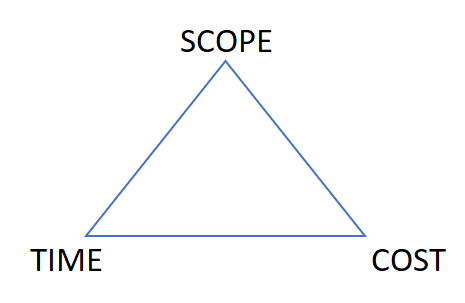
The Shift Toward Agile
Agile project management rethinks the iron triangle by putting the customer at the center. Instead of focusing only on constraints, Agile highlights value and quality as primary goals. Constraints such as scope, schedule, and cost are still important, but they are managed in service of delivering the right product to the customer. This shift reflects Agile’s mindset: success is not just about staying on budget or on time, but about creating outcomes that truly matter.
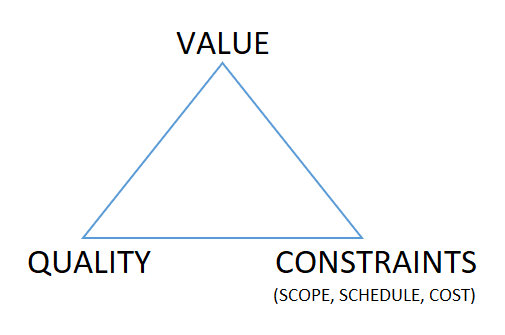
Value in the Agile Iron Triangle
The first point of the Agile iron triangle is value. Value means delivering something meaningful and useful to the customer. Agile teams aim to release working products or features as early as possible, ensuring that customers can benefit sooner. This focus on value means priorities may change as customer feedback is received. The team adapts its work to make sure the product being delivered is not only functional, but aligned with what the customer actually needs.
Quality in the Agile Iron Triangle
The second point is quality. Agile emphasizes continuous delivery of reliable and adaptive products. Quality is built into every increment, not added as a final step. Practices such as test-driven development, peer reviews, and frequent integration help ensure products meet standards from the start. Delivering a product that works well and can evolve with customer needs is just as important as delivering it on time or within budget.
Constraints in the Agile Iron Triangle
The third point is constraints, which include the traditional measures of scope, schedule, and cost. These constraints still matter, but in Agile they are flexible boundaries rather than fixed goals. The team works within these constraints while prioritizing value and quality. For example, scope can be adjusted to deliver the most important features first, while keeping costs and time under control. Constraints provide the frame, but value and quality define success.
Balancing the Agile Triangle
In Agile, success comes from balancing all three points of the triangle. Constraints provide discipline, value ensures the customer is satisfied, and quality guarantees the product is reliable. This balance allows teams to deliver results that are both effective and efficient. Unlike the traditional model, where success is measured mainly by meeting scope, schedule, and cost, Agile redefines success as delivering value and quality within realistic limits.
Closing Thoughts
The Agile iron triangle reminds us that delivering projects is not only about managing constraints. It is about creating outcomes that matter to customers while maintaining quality. Constraints are important, but they serve the higher goals of value and quality. By shifting the focus, Agile project management helps teams achieve better business results and greater customer satisfaction.
3.6 Agile vs. Scrum, PMI’s Role, and SBOK Role
Agile and Scrum Compared
Agile is a philosophy, not a single method. It is defined by the Agile Manifesto and its principles, which emphasize collaboration, customer value, and adaptability. Scrum is one of the most popular frameworks that implements Agile principles. In other words, all Scrum is Agile, but not all Agile is Scrum. Agile provides the mindset, and Scrum provides one structured way to apply it in real projects.
Why Scrum is the Leading Agile Framework
Scrum has become the most widely used Agile framework because of its simplicity and focus on results. With its clear roles, time-boxed events, and lightweight artifacts, Scrum helps teams deliver value quickly while staying flexible. Many organizations start with Scrum because it is easier to adopt compared to broader or more specialized Agile methods. Once teams understand Scrum, they often find it easier to explore and adapt other approaches like Kanban, Extreme Programming, or Lean practices.
The Role of PMI
The Project Management Institute, or PMI, recognized the growing importance of Agile and partnered with the Agile Alliance to create the Agile Practice Guide. This guide helps bridge the gap between traditional project management and Agile approaches. It explains how to choose the right life cycle, when to use Scrum or other methods, and how project managers can adapt their leadership style in Agile environments. PMI’s involvement ensures that Scrum and Agile fit within the broader discipline of professional project management.
The Role of the S-bok Guide
The Scrum Body of Knowledge, known as the S-bok Guide, provides a comprehensive and detailed framework for applying Scrum. Developed by SCRUMstudy, it explains Scrum principles, aspects, processes, and scaling practices. The S-bok goes beyond theory by offering practical guidance, case studies, and tools that help practitioners implement Scrum in real projects. For anyone looking to deeply understand Scrum or prepare for certification, the S-bok serves as a structured and reliable reference.
Scrum in the Agile Ecosystem
By learning Scrum, you build a foundation for understanding other Agile approaches. The principles of adaptability, transparency, and value-driven delivery are consistent across frameworks. Whether you later explore Kanban, SAFe, or Lean Startup, the transition is easier because the core ideas remain the same. Scrum is not the only Agile method, but it is often the best starting point for teams and organizations beginning their Agile journey.
Closing Thoughts
Agile gives us the philosophy, and Scrum offers a practical path to put it into action. PMI provides global standards and guidance to align Agile with professional project management. The S-bok gives practitioners detailed instruction and real-world application. Together, they create a strong foundation for leading projects in today’s dynamic world. This concludes our Scrum Overview.
Reference"
PMI - Project Management InstituteSBOK - SCRUM Body of Knowledge
Agile Project Management & Scrum — With AI
Ship value sooner, cut busywork, and lead with confidence. Whether you’re new to Agile or scaling multiple teams, this course gives you a practical system to plan smarter, execute faster, and keep stakeholders aligned.
This isn’t theory—it’s a hands-on playbook for modern delivery. You’ll master Scrum roles, events, and artifacts; turn vision into a living roadmap; and use AI to refine backlogs, write clear user stories and acceptance criteria, forecast with velocity, and automate status updates and reports.
You’ll learn estimation, capacity and release planning, quality and risk management (including risk burndown), and Agile-friendly EVM—plus how to scale with Scrum of Scrums, LeSS, SAFe, and more. Downloadable templates and ready-to-use GPT prompts help you apply everything immediately.
Learn proven patterns from real projects and adopt workflows that reduce meetings, improve visibility, and boost throughput. Ready to level up your delivery and lead in the AI era? Enroll now and start building smarter sprints.
Launch your Agile career!
HK School of Management helps you master Agile and Scrum—faster. Learn practical playbooks, AI-powered prompts, and real-world workflows to plan smarter, deliver sooner, and keep stakeholders aligned. For the price of lunch, you’ll get templates, tools, and step-by-step guidance to level up your projects. Backed by our 30-day money-back guarantee—zero risk, clear path to results.
Learn More HKSM
HKSM
